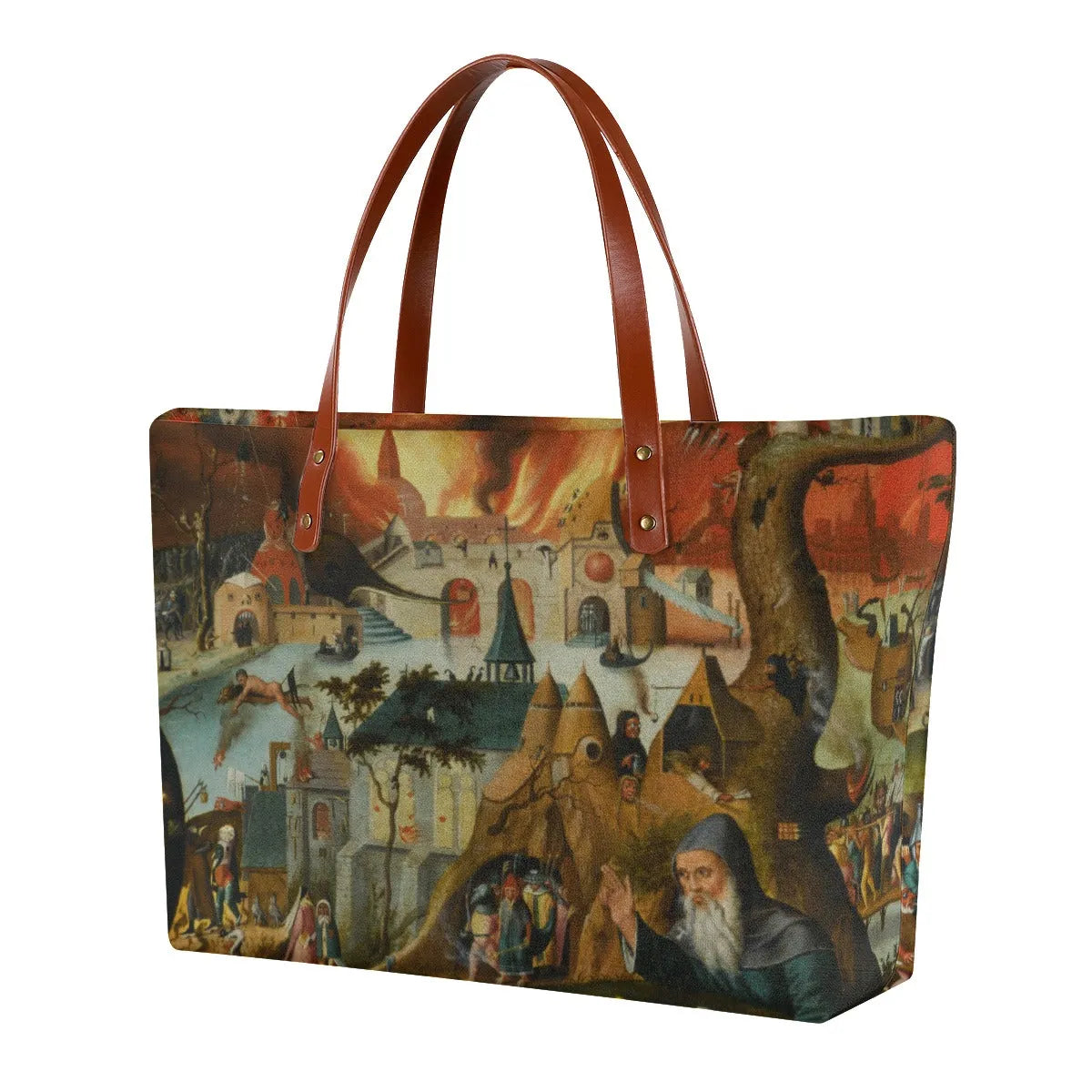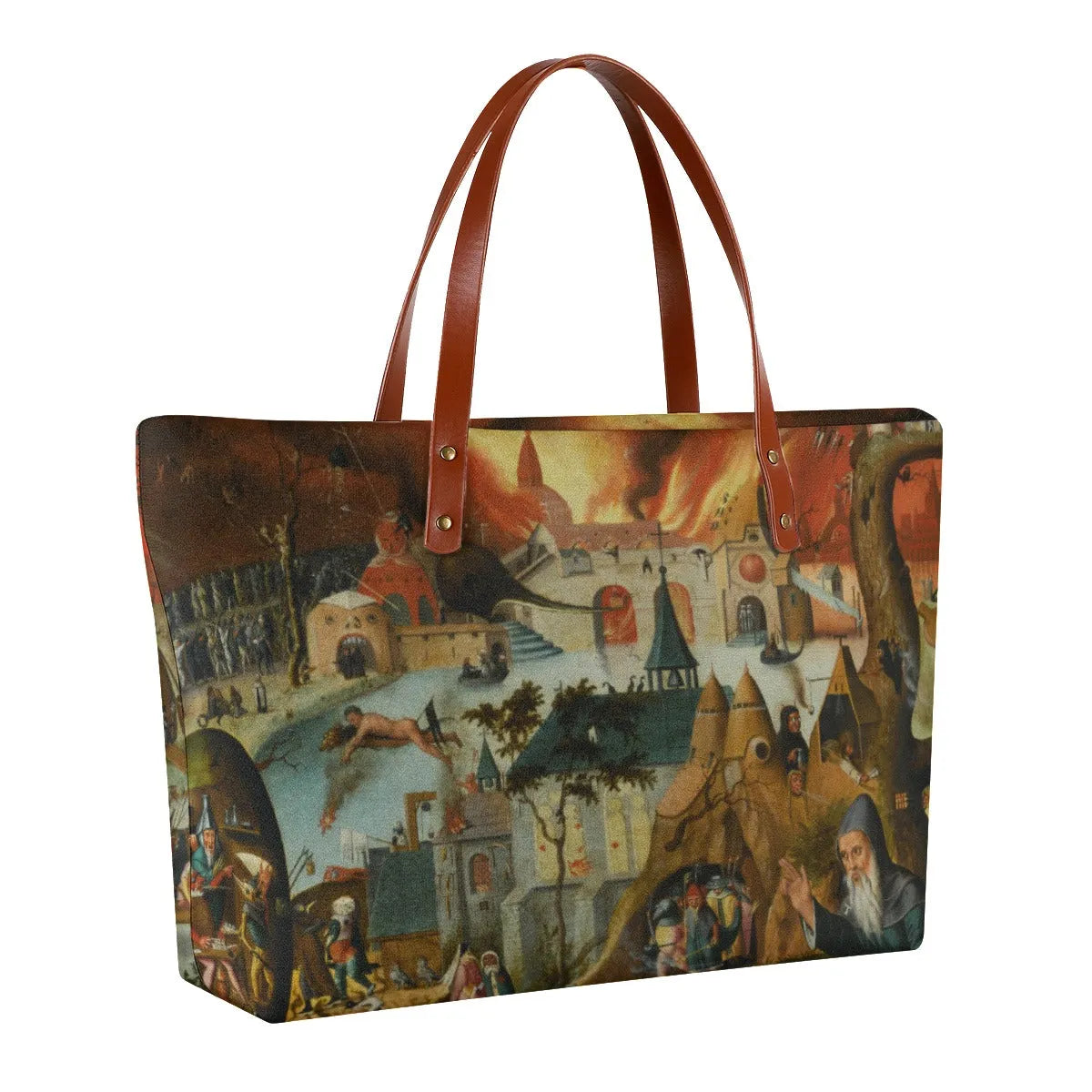



Tentation de Saint Antoine by Hieronymus Bosch Tote Bag
Immerse yourself in the surreal world of Hieronymus Bosch with our Tentation de Saint Antoine Tote Bag. This exquisite piece of art reimagined on a tote bag captures the intricate details and hidden symbolism of the original painting. Each glance at your bag reveals a new facet of Bosch's artistic genius – from the fantastical creatures to the vivid landscapes. Carry a masterpiece wherever you go, showcasing your appreciation for art in a unique and fashionable way.
Beyond its artistic allure, the Tentation de Saint Antoine Tote Bag offers remarkable functionality. Crafted with durable materials and a spacious interior, it seamlessly blends fashion with practicality. Whether you're heading to the office, exploring the city, or embarking on a weekend getaway, this tote bag complements your outfit while effortlessly carrying your essentials. Embrace the fusion of style and utility, making a statement wherever life takes you.
- Made of Diving Cloth
- Waterproof Fabric
- Large capacity
- Black zipper and Lining
- Brown strap
- Double-sided Famous Painting Art
Discover the surreal and enigmatic world of Hieronymus Bosch, one of the most celebrated artists of the Renaissance period. Here are more of Hieronymus Bosch's Famous Paintings.
About the artwork
We are aiming to have your order dispatched from our facility within 48 hours. However, please bear with us in case we are spending extra time in checking / perfecting your items, particularly during the peak season around end of the year. This does not include weekends or holidays.
Purchases made after 6pm PT will not be shipped out until the next business day. If you order after 6pm PT on a friday, your order will likely be shipped out on the following monday. For more information click here.
We provide a return policy, allowing customers to return products within a specified timeframe if they are not completely satisfied. For more information click here.
We offer a range of secure payment methods, including major credit cards and debit cards such as Mastercard, Visa, and American Express. Additionally, we support digital wallets like Apple Pay and allow for seamless transactions through trusted platforms like PayPal. For more information click here.
Choose options




20% Off Everything - Limited time only.
Enjoy Free Shipping on All Orders!
